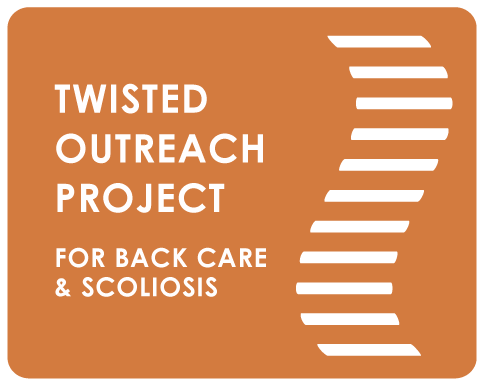Fusion Q&A with Martha Carter - “I'm Sick of Feeling Stiff!”
In our April Newsletter, we launched a Fusion Q&A series. Every month since, Martha has answered an anonymous question about scoliosis fusions. This month, her answer turned into a blog post, and we continued to post her answers monthly in our Resources section!
Read all of our Fusion Q&A here
****
I'm 28 and had my spinal fusion 12 years ago, never really exercised, and I am sick of feeling stiff; I just don't know where to begin, what is safe - just machines like treadmills and bikes, or just yoga moves and weights? Can anyone guide me in the right direction?
Following spinal fusion, most people are unsure about what exercises are safe for them. In fact, it is common for many to feel fearful about any and all movement, not to mention regular day-to-day activities. This is a completely normal reaction, as our previously twisted yet flexible spines become suddenly much straighter, and much less flexible. This change affects the entire body, mind and soul!
Before starting any exercise program or before embarking on any strenuous physical activity, it is very important for each person with a fused spine to keep in mind their individual and unique situation by getting answers to the following questions:
What kind of fusion surgery was done and when?
(what type of instrumentation, what kind of fusion, what year?)What is your curve pattern?
Which part of the spine was fused?
Do you experience any pain?
Do you have other physical or health issues that restrict your ability to exercise?
What are your goals for physical wellness and what kind of exercise do you like to do?
These answers are your roadmap to staying safe; they will help you be able to talk to exercise professionals as well as doctors and other wellness experts. They will also help you choose the best direction in terms of exercise for your particular curve pattern, type of instrumentation, and fusion.
For example, here are answers (in order) to the six questions above, based on information in the original question from our 28-year-old ‘fusioneer’:
Surgery type and time: If you are under 40 years old today, there is a good chance that you had a very different (and possibly less draconian) bracing and/or surgery experience than older patients, due to the advancement of medical technologies over the years. If you are under 20 years old, you may have had the benefit of specific physiotherapy or counselling or other helpful guidance to which earlier generations of ‘fusioneers’ did not have access.
Curve pattern: Which direction and to what degree your spine curves and twists are an important part of your fusion knowledge. By learning to visualize your spine, you can learn to lengthen-strengthen-decompress-empower and generally maintain the ‘correction’ from surgery for the best possible outcomes. And by extension, you can learn to avoid and find solutions for any movements that cause discomfort.
Which part is fused: Each part of the spine—cervical, thoracic, lumbar and sacral—move differently, serving specific and different mobility functions (ie: the thoracic spine is key for twisting, whereas the lumbar spine is meant to bend forward and back, and the cervical spine moves in several directions to allow nodding and shaking). Knowing which part of your spine is fused will help you determine the best ways to accommodate lost function due to fusion.
Pain? No pain is no pain. If you are experiencing any pain, stop doing whatever is hurting you, and in general, slow down. Or if you have been doing nothing, look into healing options as staying sedentary does not help pain in the long run either. You must keep moving, but safely. In this case, rather than starting with exercise, I strongly suggest that you seek supportive care from a bodywork professional (massage, acupuncture, etc) to find ease and, for a while, focus on developing a practice of deep breathing until the pain subsides. Use this approach throughout your life whenever things are feeling painful or fragile. To watch a video on my approach to breathing, see TOPS Exercise #1.
Other physical issues? If so, take them into consideration at all times, developing the same mindfulness around them as you are developing for your spine.
What are your exercise goals? The first goal must be finding ease and avoiding pain and being realistic regarding your limited mobility with the fusion. Start slowly and see what feels right for you. Generally, non-impact activities are recommended such as walking, swimming, biking, skiing, dancing and hiking. If you feel good in your body, then non-contact impact sports like tennis and jogging are fine for many. Working with equipment and light weights in the gym is very valuable, but it is recommended that each person develop a program with the help of a knowledgeable gym trainer to ensure safety.
Although there is a wide range of scoliosis-specific exercise programs, including Yoga for Scoliosis, Pilates for Scoliosis, Schroth Physiotherapy, as well as many options for supportive care, it is important for people with fusions to understand that most of the doctors, physiotherapists, teachers, trainers and other wellness professionals do NOT have fusions themselves, so it is impossible for them to truly understand what it feels like. Therefore, it is up to each individual to explain and advocate for their own needs!
Got comments? Please feel free to write us anytime
